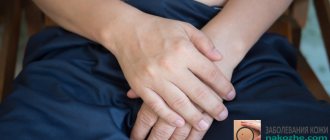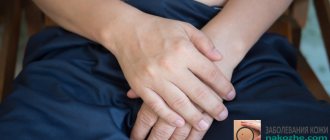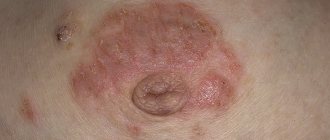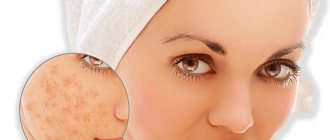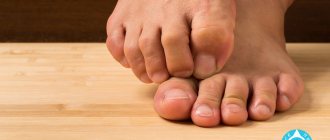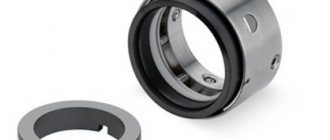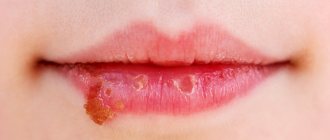A COURSE OF TREATMENT:
one-time manipulation
+7
+7
Make an appointment
Removal of earlobe atheroma is a procedure for removing a benign neoplasm (cyst) resulting from a blockage of the sebaceous gland.
Removal of earlobe atheroma is a procedure for removing a benign neoplasm (cyst) resulting from a blockage of the sebaceous gland.
Contraindications:
- No
Doctors:
- Zaitsev Vladimir Mikhailovich (20 years of experience)
- Magomedov Murad Magomedovich (6 years of experience)
Equipment used:
- Laser
- Radio wave surgical device FOTEK E81M
Atheroma of the earlobe is a benign neoplasm (cyst) resulting from blockage of the sebaceous gland. It is a spherical tumor of the lobe, which is filled with a light-colored cheesy substance. Fluid and dead cells accumulate inside it. The size of atheromas reaches half a centimeter in diameter. The problem can affect absolutely every person, regardless of gender and age. Women who wear earrings are at particular risk: in this case, atheroma significantly increases the risk of developing infection.
An earlobe with such a tumor not only does not look aesthetically pleasing, but can also be harmful to health. The cyst can fester and provoke inflammation of nearby tissues, which will sharply worsen the person’s condition. Therefore, it is necessary to remove the atheroma in time.
The formation of atheroma is associated with a malfunction of the sebaceous glands, as a result of which sebum is not removed outside, but accumulates inside. This is facilitated by factors such as:
- metabolic disease;
- hormonal imbalance in the body;
- endocrine disorders;
- improper ear cleaning;
- incorrectly performed ear piercing;
- skin damage;
- acne.
At the initial stage, the formation on the lobe is invisible. Then it begins to increase in size. Characteristic symptoms gradually appear. With atheroma in the ear, pain appears in this area, redness of the skin, swelling, itching, burning, and a feeling of accumulation of water inside the “ball”.
If you find such a seal on the lobe, you need to take treatment responsibly: to open the festering tumor and remove it, you need to consult a doctor - an otolaryngologist.
| Medical service | price, rub. |
| Opening of suppurating atheroma of the earlobe (on one side) | 5000 |
| Initial appointment with an ENT doctor | 2000 |
| Repeated appointment with an ENT doctor | 1500 |
| Initial consultation with the head of the clinic | 4000 |
| Repeated consultation with the head of the clinic | 2000 |
| Additional consultation during procedures | 500 |
| Adaptation of a child to the ENT office | 2000 |
| Adaptation of a child to the ENT office by the head of the clinic | 4000 |
A ball has appeared in my earlobe and it hurts. What could it be?
There may be several reasons why a painful ball has formed inside the earlobe. To establish what exactly causes its appearance, you need to take into account the location of formation, the type of compaction, how mobile it is and how it behaves when pressed (pain, change in color and temperature of the skin).
- The most common reason for the appearance of a ball in the earlobe, which hurts when pressed, is atheroma (wen). Don't immediately panic at this name. Atheroma is, of course, a tumor, but a benign one. It is formed from fat cells.
Doctors do not know the exact reasons for the appearance of wen, but they may be associated with blockage of the excretory ducts of the sebaceous glands, poor lifestyle, frequent overeating or disruption of the endocrine system.
Atheroma is a dense, often painless compaction in color and temperature no different from the skin. When pressed, it moves easily inside.
As a rule, when such balls appear, there is no inconvenience, except for cosmetic ones, unless, of course, we are talking about inflammation and suppuration. The inflammatory process is indicated by an increase in size and reddening of the surrounding skin. When you press the ball, you feel pain and you can notice that its temperature is higher than the temperature of the skin.
- An epidermoid cyst, which is also the cause of the appearance of lumps in the earlobe, is practically indistinguishable from atheroma in appearance. Its formation is caused by excessive proliferation of epidermal cells, as a result of which a capsule of epithelial cells of a fairly dense structure appears. In the case of suppuration of the epidermoid cyst, pain appears when pressing the ball and its increase in size is observed.
- Traumatic tumor. A ball in the ear that hurts can be caused by injury, damage, or an insect bite.
The most common reason why a ball-shaped lump forms in the earlobe, which hurts when pressed, is ear piercing. Unpleasant sensations are caused by increased production of histamine. If you notice that the ball in your earlobe hurts and becomes hot, there is redness of the skin around it and purulent discharge appears, this indicates the beginning of an inflammatory process caused by the addition of an infection.
- Inflammatory infiltrate. The appearance of a small red lump on the earlobe is often associated with blockage and suppuration of the skin glands or hair roots. The distinctive features of the inflammatory infiltrate are that it rises above the surface of the skin, while redness of the skin around is observed, and an abscess can be seen inside.
If the lump in your earlobe hurts and begins to increase in size, you will not be able to fix the problem on your own. In such a situation, medical attention is needed. The appearance of pain indicates that the inflammatory process and suppuration have begun. If they are not eliminated, a benign tumor can become malignant, or the infection can spread throughout the body.
How to treat if the appearance of a blister still cannot be avoided
To properly treat a blister, you need to know its origin. Therefore, if the cause of the formation is unknown, it is more appropriate to talk about pain relief, itching and swelling.
Modern pharmaceuticals and traditional medicine recipes come to the aid of the sick.
Medicines to combat illness
Broad-spectrum antimicrobial ointments such as Tetracycline, Erythromycin, Levomekol ointment, the root cause of the appearance of a blister is unknown, because they act on almost any group of bacteria.
Furacilin solution will help disinfect the surface of the skin.
Treatment of blisters caused by the herpes virus
Antiviral ointments are used to treat blisters caused by the herpes virus. They act precisely, reach the source of inflammation faster, and many of them have healing properties.
The most commonly prescribed are Oxolinic ointment, Viferon, Zovirax, Cycloferon.
Treatment of blisters - signs of allergies
In case of an allergic reaction, it is possible to use Suprastin, Zodak tablets and other antihistamines. For topical use, Fenistil gel is usually prescribed; herbal-based Gistan cream is also suitable.
Help with blisters formed at the site of a burn
Panthenol foam cream has proven itself to be effective in the treatment of blisters from burns; it has a light texture that allows you to apply the product without increased friction of damaged skin.
The well-known balm Rescuer, made from natural ingredients, helps to accelerate the restoration of the protective properties of the burned area of the skin.
OzhogovNet and Appolo gels are also effective; they not only have antiseptic properties, but also have a wound-healing and analgesic effect.
How to properly care for your ears, watch this video:
Treatment of blisters - symptoms of fungal ear disease
To get rid of a blister formed due to ear fungus, you must first cure the fungus itself. If the fungus is caused by taking antibiotics or hormonal drugs, you should stop using them.
Vitamin therapy will help boost immunity, a decrease in which could also lead to the formation of ear fungus and, as a result, a blister.
Antifungal agents should be prescribed by an ENT specialist depending on the type of fungus (yeast-like, mold, especially pathogenic). Nitrofungin and Econazole are usually prescribed.
The very prescription of antibiotic drugs for internal use in the treatment of any ailment is strictly prohibited. Remember, only your doctor can prescribe antibiotics. By self-medicating, you can cause serious harm to your health.
Traditional medicine comes to the rescue
If you don’t want to poison your body with medications, you can turn to traditional medicine. There are many recipes to get rid of various types of blisters.
Chereda is a natural antihistamine
The series has excellent antibacterial and wound-healing properties. In addition, this plant has long been known as a natural antihistamine.
To relieve itching and swelling from the blister, you need to gently wipe the affected area several times during the day with a cotton pad soaked in the infusion of the string. Lotions made from a concentrated infusion of herbs are also effective.
If you have allergies, you can also take the series orally. Brew 1 tablespoon of dried herb per glass of boiling water, leave for 20 minutes and drink warm. But this infusion should not be consumed more than 2-3 times a day.
Chamomile is an excellent anti-inflammatory agent
Truly a wonderful flower with a whole range of beneficial properties. Chamomile infusion has anti-inflammatory, antiviral and antimicrobial effects.
It is useful to use chamomile infusion lotions for blisters on the ears. This lotion will also relieve pain due to the soothing properties of chamomile. A crushed aloe vera leaf applied to the blister will have the same effect.
Apple Cider Vinegar - An Inexpensive Refrigerator Remedy
An antibacterial agent available to everyone. Using a cotton swab dipped in an aqueous solution of apple cider vinegar (1:1), you need to wipe the area of skin affected by the blister.
It is also useful for burns: diluted with cold water, vinegar will remove heat from the burn, thereby relieving pain and burning.
Symptoms and etiology of atheroma
In most cases, a ball in the earlobe is nothing more than atheroma, which is a benign neoplasm. In this case, a small lump initially appears, but if left untreated, it can increase in size to 5-6 centimeters and cause discomfort. Redness of the skin around the lump indicates the beginning of the inflammatory process and it is possible that pus has accumulated inside.
The boundaries of the atheroma (wen) are clearly defined, its surface is smooth, and its shape is often round. The edematous excretory duct present in the center of the compaction is increased in size, and the capsule itself is filled with a porridge-like mass, which consists of epithelial cells and glandular secretions.
The appearance of a lump on the earlobe that hurts when pressed indicates an infection of the wen. The onset of the inflammatory process is indicated by the following signs:
- The area where the lump appears is too painful, especially if you press on it;
- Increased body temperature;
- Increased level of blood flow (hyperemia);
- When you press on the lump, an ichor with blood and purulent impurities appears;
- Release of the mushy mass with which the capsule is filled upon spontaneous opening.
If a painful lump occurs in your earlobe, it is recommended to seek medical help at the very beginning. At the beginning of the development of pathology, the disease is treated easier and faster. Under no circumstances should you try to open the wen yourself. This may lead to re-infection. See also: Geranium for ear pain
Acne
Fixed and soft balls in the earlobes can be ordinary pimples. They appear due to blockage of hair follicles and clogged pores. This phenomenon can be easily distinguished from other formations. In this case, the formation is located on the surface of the skin. As a rule, the color of pimples is red, and in the center you can see white dots, which represent an accumulation of pus. Pimples can also hurt when pressed, but after they break out and their contents leak out, the discomfort goes away.
In rare cases, boils form in the ear area. Such pimples cannot be squeezed at home. Their removal should only be entrusted to a specialist.
Signs of atheroma
Initially, special attention is not paid to the seal due to the fact that it is perceived as an ordinary pimple on the earlobe. As the lump grows, distinctive features will appear. These include:
- Deterioration of blood supply to the ear. It is caused by pathological growth of adipose tissue.
- Changes in the appearance of the skin on the earlobe and in the auricle itself. There is the appearance of shine, tension and pronounced swelling.
- Inflammation of the wen is accompanied by redness of the skin and an increase in temperature at the site of its formation.
- When a ball appears on the earlobe, the development of otitis media cannot be ruled out.
- Untimely and incorrect treatment can lead to the appearance of cystic formations and other lipomas.
- Complaints of feeling unwell and fever.
If the ball that hurts. appeared behind the earlobe, then you should not delay a visit to a specialist. If it breaks under the skin, purulent exudate can enter the brain, which will lead to the development of meningitis.
It is very important to consult a doctor immediately after a lump appears on your earlobe and undergo the appropriate course of treatment. At the initial stage of development, atheroma can be cured with medications. In the advanced stage, surgical intervention is indispensable.
Effective medical assistance
Seeking help from a doctor if you have a lump on your head near your ear is the best decision. First of all, he finds the starting point and finds out whether the patient has any diseases, since the formation of a lump can be affected by:
- infection getting under the skin. Most often this happens due to an unprofessional puncture of the earlobe or ear cartilage from behind;
- development of a chronic disease, such as diabetes, etc.;
- increased production of sebaceous glands;
- weakened immune system;
- increased sweating.
Treatment methods
Even if a lump that appears in the ear area does not cause you any discomfort or pain, it is not recommended to delay going to the doctor. Untimely removal of atheroma leads to re-inflammation, as a result of which suppuration begins, swelling appears and the temperature rises. In such situations, long-term treatment is required and always with the use of antibiotics.
If the inflammatory process has already begun, surgical intervention is necessary, during which the cyst is opened and its contents are removed.
After the end of the inflammatory process, it is necessary to perform a second operation to remove the capsule. If this is not done and treatment is stopped after removing the contents of the cyst, the atheroma will periodically grow and become inflamed.
The tumor is removed under local anesthesia. During the operation, the surgeon makes a thin incision through which the capsule and its contents are removed. If you have to make a large incision, stitches are applied, which can be removed after 4-5 days. The sooner the atheroma is removed, the less noticeable the trace of the operation. After timely removal of the ball on the earlobe, virtually no traces remain.
In addition to surgical intervention, atheroma can be removed using laser or radio wave methods.
- Laser removal
If the ball that has formed in the earlobe does not exceed 5 mm in diameter, it is not necessary to remove it through surgery; it is quite possible to use a carbon dioxide laser. If the diameter of the lump is more than 5 mm, removal can be done using a combined method, which includes the use of a laser beam and a scalpel.
With this method of treatment, tissue injury is minimal and relapses occur less frequently. The main advantage of laser removal of atheroma is the short recovery period.
- Radio wave method
The use of radio waves to remove wen on the earlobe began quite recently. Since this method is the most gentle, it is better to focus on it. The atheroma is removed by the so-called “evaporation” of the cyst along with the capsule. The radio wave method means the use of high-frequency waves, the energy of which is concentrated on the corresponding electrode. The procedure does not involve heating the tissues or causing thermal damage. It is performed under local anesthesia.
The equipment used to remove a cyst allows you to kill cells only in the desired area. Thus, healthy cells are not exposed to radio waves. After removing the formation, a crust forms in its place, under which the wound heals.
Under no circumstances should you try to squeeze out the wen yourself. The blocked duct is so narrow in diameter that all attempts will not only fail, but will also cause the onset of the inflammatory process.
When will you need specialist help?
But it happens that the health condition may worsen, and the culprit in this case is a small lump on the jaw near or behind the ear.
Doctors advise not to hesitate and visit a medical facility if:
- periodically arising pain bothers you, over time it becomes more and more disturbing;
- nearby lymph nodes enlarge;
- the color of the damaged area is significantly different from the healthy one;
- the general condition is increasingly deteriorating, weakness, a feeling of fatigue after little physical activity, and an increase in body temperature may appear.
To avoid visiting a doctor, some people begin to use medical and folk remedies, trying to squeeze out the contents that have accumulated in the lump near the ear in children and adults. Most often, this leads to sad consequences: the inflammatory process begins to progress, the tumor increases, and the general state of health deteriorates sharply.
What is required of the patient during this period is to prevent infection from entering the affected area, ensuring its sterility.
Prevention
Thanks to the modern level of surgery and new methods of treating wen, it is not necessary to shave the hair during manipulation. This point is important for women who have delayed a visit to the doctor, fearing precisely this.
Despite the fact that the appearance of a wen is not dangerous, aesthetically it is a very unpleasant disease and I would like to know how to prevent it. Firstly, you need to get rid of chronic diseases, and secondly, pay due attention to the topic of proper nutrition, especially for people who are prone to obesity. And of course, don’t forget about the rules of hygiene.
Mumps
Mumps can also cause a tumor. It is the salivary glands located next to the ears that have become inflamed, which means they have noticeably increased in size. At the same time, the patient, and these are mainly children, experience an inflammatory process of the throat mucosa, an increase in temperature and a general weak condition. This disease, which has a popular name - “mumps”, is accompanied by painful manifestations in the affected areas. The danger of mumps is that it is transmitted by airborne droplets, and the infection easily spreads to a healthy person. Therefore, complete isolation of the patient is required.
Manifestations in children
Most often, a ball on the earlobe appears in people aged 25-50 years, but the possibility of its formation in children cannot be ruled out. Children encounter this problem before the onset of puberty; from a medical point of view, we are talking about atheroma of the auricle. If you notice such a formation in a child, you should immediately consult a doctor, since in a child’s body such lumps can reach large sizes.
If a ball has formed near the girl’s earlobe and it hurts, the reason may be related to ear piercing. In this case, it is recommended to wear silver earrings rather than gold ones for some time.
From a medical point of view, the appearance of atheroma does not pose any danger, however, this phenomenon may indicate infection with AIDS. In some cases, a wen appears after unprotected sexual intercourse and is accompanied by deterioration of health, the appearance of acne and herpes. In such cases, atheroma is localized not only in the ear area, but spreads throughout the body, in the locations of the sebaceous glands. In addition to consulting with an infectious disease doctor, it is necessary to undergo appropriate tests.
See also: Ear cannot hear but does not hurt
According to doctors, the appearance of atheroma may be associated with:
- Hypothermia;
- Prolonged exposure to the sun;
- Improper hygiene;
- Injuries to the earlobes;
- Unsuccessful ear piercing;
- Acne;
- Hereditary predisposition;
- Hormonal imbalance caused by disruption of the endocrine system;
- Seborrhea;
- Wearing jewelry that is made from low-quality materials;
- Long stay in a hot, dusty room.
Reasons for the formation of wen on the ear
They speak of atheroma when the ball is formed as a result of blockage of the sebaceous gland. It stretches as a result of the growth. Most often, atheroma worries middle-aged adults. This condition is not typical for children and adolescent patients and is quite rare.
The sebaceous glands are very small in size. They are designed to produce sebum and are located throughout the human skin. If the gland becomes clogged, then secretion production continues, but there is nowhere for it to be released, so the gland increases.
Possible consequences
According to doctors’ recommendations, it is better to remove the atheroma in order to avoid its degeneration into fatty phlegnoma in case of infection. Since phlegnoma is located close to the blood vessels that provide nutrition to the brain, it is very dangerous. Delayed treatment can lead to adverse consequences, including death.
Treatment of atheroma should be carried out only by a specialist. To prevent atheroma, it is recommended to exclude all fatty, sweet and starchy foods from the diet. You need to clean your ears in a timely manner; for this it is better to use soap and water or a special scrub. By following these simple preventive measures and avoiding mechanical damage to the ear, the likelihood of a ball appearing on the earlobe is minimal.
Do not forget that self-squeezing the ball can result in infection and the beginning of the inflammatory process. If it is not possible to see a doctor, it is better to wait until the wen disappears on its own.
Precautionary measures
To clarify the diagnosis, tests must be taken. But at the same time, a person must take care not to re-infect others. So, it is advisable to observe bed rest. Naturally, it is worth suppressing the desire to warm up, which often arises in everyone who is faced with ear pathologies.
“All spa treatments are prohibited - bathhouse, hammam, sauna, solarium, swimming pool. It is also worth giving up traditional warming methods, for example, hot salt or cereal in a bag or egg. The explanation is simple - all this can lead to generalization of the infection. That is, it will spread throughout the body with the bloodstream and will only get worse,” says Vladimir Zaitsev.
Article on the topic
It has grown so much. What formations appear in the nose and why are they dangerous?
